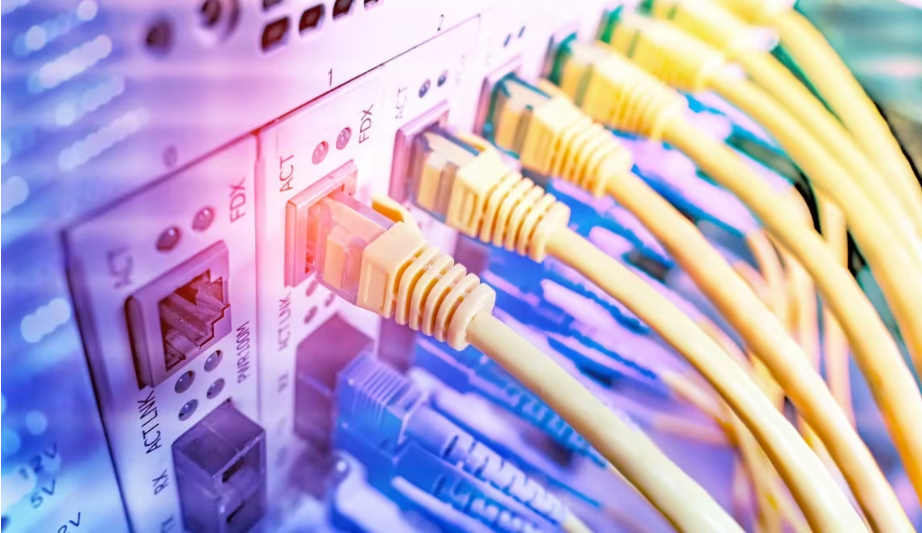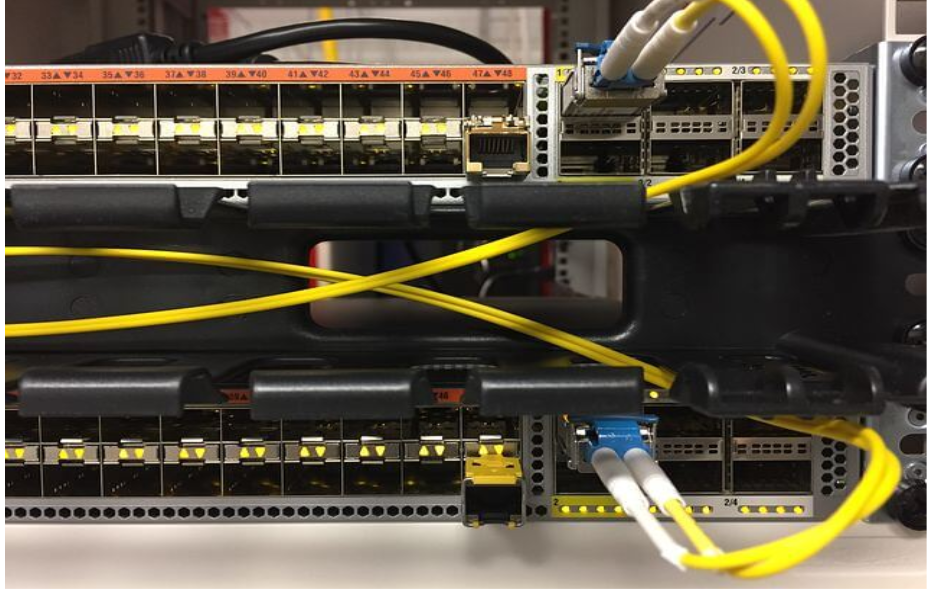I. Introduction
In the vast expanse of today’s interconnected digital world, understanding the intricacies of networking technology is paramount. From the early days of rudimentary connections to the lightning-fast data highways of today, the evolution of ethernet connection technology has been nothing short of revolutionary. The rich history of networking technology, from its humble beginnings to its pivotal role in shaping the digital landscape we navigate today, has led to new advancements such as using two Ethernet ports at the same time for improved connectivity and network performance. To learn more about this capability and how it can benefit your network setup, check out.
A. Brief Overview Of The Evolution Of Networking Technology
The roots of networking technology can be traced back to the 1960s with the birth of ARPANET, a project funded by the United States Department of Defense. ARPANET laid the groundwork for what would eventually become the internet as we know it, pioneering concepts like packet switching and remote login protocols. This early experimentation paved the way for the interconnected world we inhabit today, where information flows freely across vast networks spanning the globe.
As technology advanced, so too did the capabilities of networking infrastructure. From the introduction of local area networks (LANs) in the 1970s to the widespread adoption of the internet in the 1990s, each milestone brought us closer to a more interconnected society. The emergence of high-speed broadband connections in the early 2000s further accelerated this trend, ushering in an era of unprecedented connectivity and digital innovation.
B. Importance Of Understanding Ethernet Ports In Today’s Technology Landscape
In this digital age, Ethernet ports serve as the gateways through which data flows between devices on a network. Whether you’re browsing the web, streaming content, or accessing cloud services, chances are you’re relying on Ethernet technology to stay connected. Understanding Ethernet ports is essential for both consumers and professionals alike, as they form the backbone of modern networking infrastructure.
From a consumer standpoint, knowing how to properly connect devices via Ethernet can enhance both speed and reliability, especially in scenarios where a stable internet connection is crucial, such as online gaming or video conferencing. Additionally, understanding Ethernet ports can help users troubleshoot connectivity issues and optimize their network setup for peak performance.
From designing and deploying network infrastructure to troubleshooting complex issues, proficiency in Ethernet protocols and configurations is a prerequisite for success in these roles. Moreover, as the demand for high-speed, low-latency networks continues to grow, so too does the need for skilled professionals who can harness the full potential of Ethernet technology.
II. Evolution Of Ethernet Ports
Ethernet ports have undergone a remarkable evolution since their inception, adapting to meet the ever-growing demands of modern networking environments. From the early days of Ethernet hubs to the introduction of lightning-fast standards like Gigabit Ethernet, the journey of Ethernet ports is a testament to the relentless pace of technological innovation.
A. Transition From Ethernet Hubs To Switches
In the early days of networking, Ethernet hubs served as the central point for connecting devices within a local area network (LAN). Hubs operated by broadcasting data to all connected devices, leading to inefficiencies and network congestion as traffic increased. However, as network complexity grew and bandwidth demands soared, the limitations of hubs became increasingly apparent.
Enter Ethernet switches, a revolutionary advancement that transformed the way data is transmitted within a network. Unlike hubs, switches are capable of intelligently routing data directly to its intended destination, resulting in faster and more efficient data transfer. This switch-based architecture not only alleviated congestion but also paved the way for more scalable and reliable network infrastructures.
B. Introduction Of Faster Ethernet Standards
As the demand for high-speed networking solutions escalated, the industry responded with the introduction of faster Ethernet standards. Fast Ethernet, which boasts speeds of up to 100 megabits per second (Mbps), represented a significant leap forward from its predecessor, paving the way for bandwidth-intensive applications like video streaming and online gaming.
Building upon the success of Fast Ethernet, Gigabit Ethernet emerged as the next evolution in Ethernet port technology. With speeds reaching up to 1 gigabit per second (Gbps), Gigabit Ethernet revolutionized network performance, enabling seamless multimedia streaming, rapid file transfers, and real-time collaboration across distributed teams.
The introduction of these faster Ethernet standards not only expanded the capabilities of Ethernet ports but also fueled innovation across industries, driving advancements in areas such as cloud computing, big data analytics, and virtualization.
III. Importance Of Ethernet Ports In Modern Technology
A. Role Of Ethernet Ports In Wired Networking Infrastructure
Ethernet ports serve as the cornerstone of wired networking infrastructure, providing the essential connectivity needed to interconnect devices within a LAN or connect to the broader internet. From desktop computers and servers to printers and network-attached storage devices, Ethernet ports facilitate seamless communication and data exchange across diverse endpoints.
In corporate environments, Ethernet ports play a vital role in supporting mission-critical applications and services, ensuring high availability and performance for essential business operations. Moreover, Ethernet ports enable the deployment of secure and robust networks that can accommodate the evolving needs of modern enterprises, from remote work initiatives to IoT (Internet of Things) deployments.
B. Compatibility And Versatility Of Ethernet Ports
One of the key advantages of Ethernet ports is their universal compatibility across a wide range of devices and network configurations. Whether you’re connecting a laptop to a router, linking multiple switches in a data center, or integrating network-enabled appliances into a smart home ecosystem, Ethernet ports offer unparalleled versatility and interoperability.
Furthermore, Ethernet ports support a variety of networking protocols and technologies, including Power over Ethernet (PoE) for powering devices like IP cameras and VoIP phones, as well as VLAN (Virtual Local Area Network) for segmenting network traffic and enhancing security.
IV. Applications And Use Cases Of Ethernet Connection
Ethernet ports play a crucial role in a myriad of applications and use cases, both in home networking setups and business environments, enabling seamless connectivity and robust networking solutions tailored to diverse needs.
A. Ethernet Ports In Home Networking Setups
In the realm of home networking, Ethernet ports serve as the backbone of connected households, facilitating high-speed internet access, media streaming, online gaming, and smart home automation. Whether it’s connecting gaming consoles for lag-free multiplayer experiences, streaming devices for high-definition entertainment, or security cameras for remote monitoring, Ethernet ports offer unparalleled reliability and performance compared to wireless alternatives.
Moreover, Ethernet ports empower homeowners to create stable and secure network environments, free from the interference and congestion often associated with wireless connections. This is particularly important in larger residences or multi-story buildings where Wi-Fi signals may struggle to penetrate walls and obstacles.
B. Ethernet Ports In Business And Enterprise Environments
In business and enterprise settings, Ethernet ports form the backbone of mission-critical network infrastructures, supporting a wide range of applications and services essential for daily operations. From connecting workstations and servers to enabling high-speed data transfers and supporting VoIP (Voice over Internet Protocol) communications, Ethernet ports play a pivotal role in driving productivity and collaboration across organizations.
Moreover, Ethernet ports enable the deployment of advanced networking technologies such as VLANs for network segmentation, QoS (Quality of Service) for prioritizing critical traffic, and PoE (Power over Ethernet) for powering network-enabled devices such as IP phones, surveillance cameras, and access points.

V. Conclusion
The increased dependence on Ethernet ports has become even more evident in recent times, as more and more devices connect to the internet through Wi-Fi networks. However, as convenient as wireless connections may be, they are not without their flaws. One common issue that many encounter is the situation where the internet works perfectly fine with an Ethernet connection, but fails to function when connected via Wi-Fi. This can be a frustrating experience, leading many to seek out solutions and troubleshoot the root cause of the problem.
Frequently Asked Questions (FAQ)
Q1.How have Ethernet ports evolved over time?
Ethernet ports have evolved from basic connectors for networking devices to supporting faster data transfer speeds, Power over Ethernet (PoE) capabilities, and improved security features.
Q2.What are the advantages of using Ethernet ports compared to other connectivity options like Wi-Fi?
Ethernet ports offer more reliable and consistent connections with higher data transfer speeds, making them ideal for bandwidth-intensive tasks and applications where stable connectivity is crucial.
Q3.Can Ethernet ports be used in both home and business environments?
Yes, Ethernet ports are commonly used in both home networking setups and business environments due to their reliability, scalability, and ability to handle large volumes of data traffic.
Q4.How do Ethernet ports contribute to the Internet of Things (IoT) ecosystem?
Ethernet ports play a significant role in connecting IoT devices to the network infrastructure, facilitating communication, data exchange, and remote management of IoT devices in various applications such as smart homes, healthcare, and industrial automation.
Q5.What are the future trends and innovations expected in Ethernet port technology?
Future advancements in Ethernet port technology may include higher data transfer speeds (e.g., 10 Gigabit Ethernet, 25 Gigabit Ethernet), enhanced security protocols, and integration with emerging technologies like artificial intelligence and edge computing.







